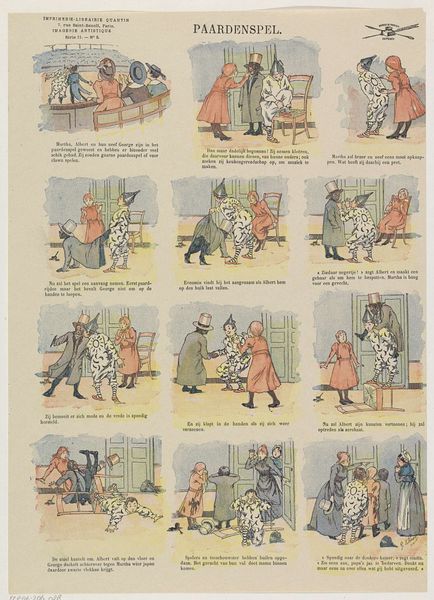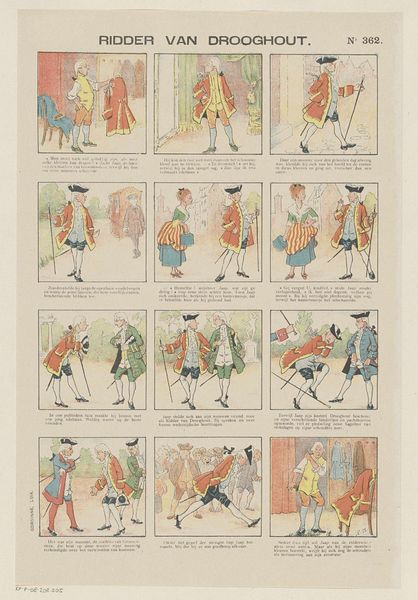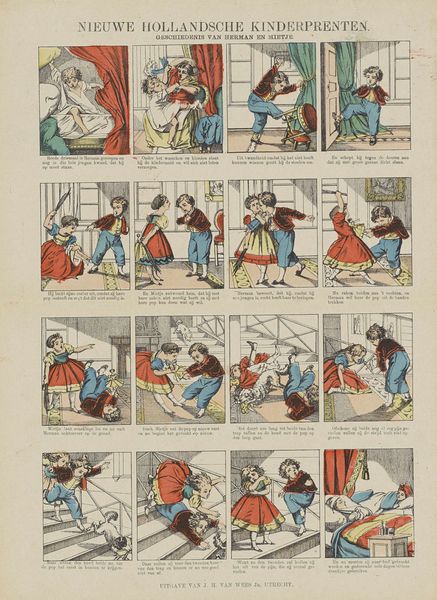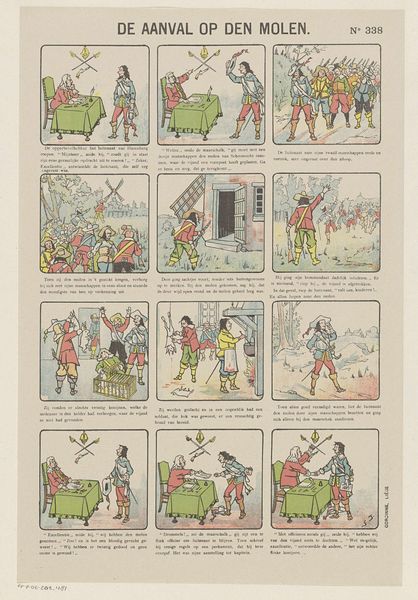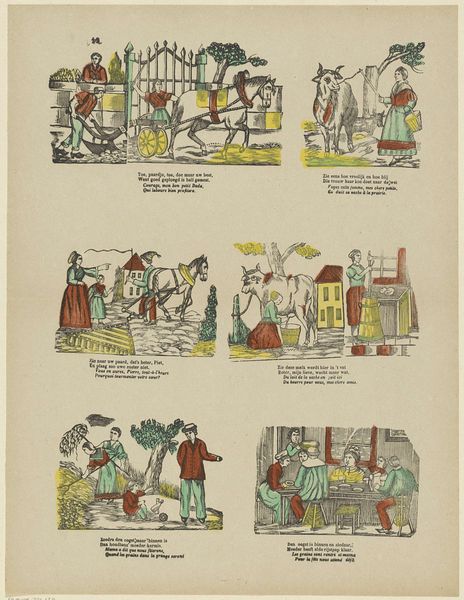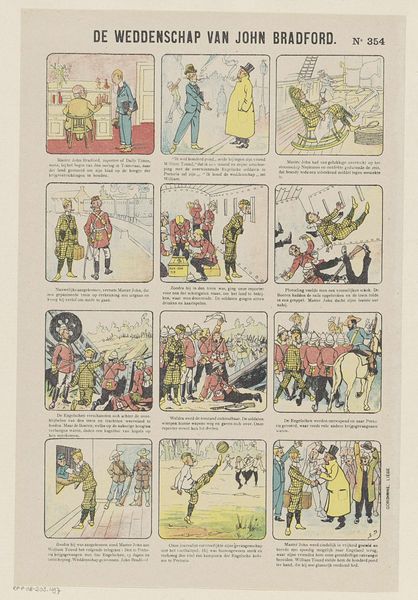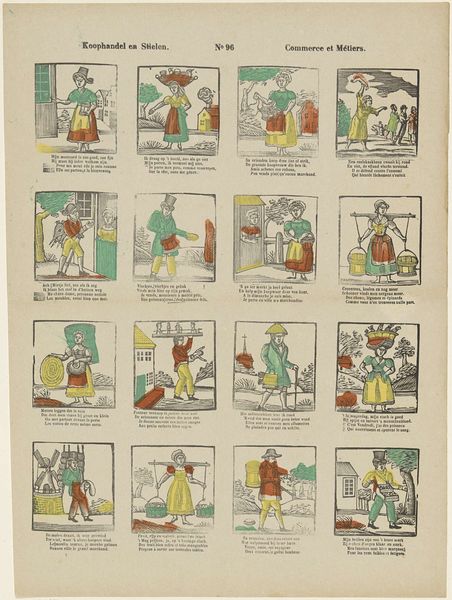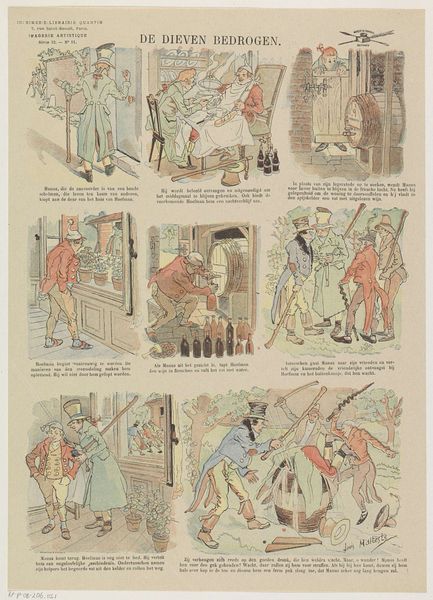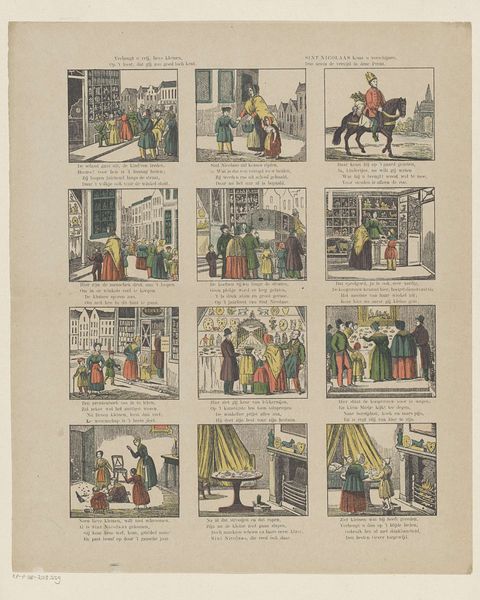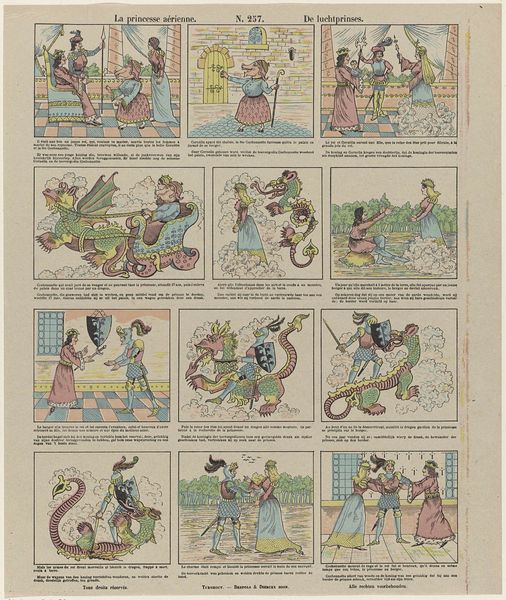
graphic-art, print
#
graphic-art
#
comic strip sketch
#
narrative-art
#
comic strip
# print
#
comic
Dimensions: height 399 mm, width 272 mm
Copyright: Rijks Museum: Open Domain
Curator: Alright, let's dive into "De driftige bui van baas Pikdraad," which roughly translates to "The Irascible Mood of Master Pikdraad." It’s an early comic strip, dating, fascinatingly, anywhere from 1894 to 1959. The work is housed here at the Rijksmuseum and executed as a print. What springs to mind for you initially? Editor: Chaos, utter chaos! But organized chaos. The panels tell a story, I’m guessing a rather…unpleasant one? But what catches my eye is how labor, literally putting on one's boots for work, erupts into this spectacle of anger and humiliation. Is Pikdraad the unfortunate figure in the panels, the poor fellow beset by terrible boots? Curator: Precisely! It's about Master Pikdraad and his, shall we say, *experiences* with some troublesome new boots. What I find evocative is how it plays with the very linear, grid-like structure that's synonymous with early comics, a structure it simultaneously embraces and subverts to emphasize that feeling of mounting irritation. Almost a silent scream frozen in time! Editor: That makes so much sense! And look how Pikdraad's social standing is emphasized – compare him in his shop versus the police! The artist makes such careful choices when deploying color in these scenes, using it for contrast in a narrative form and clear social commentary on hierarchies. It feels like labor made absurd. Curator: Absolutely. It’s a visual explosion of class tensions told in small squares! The narrative unfurls so vividly, almost slapstick-esque. And those stiff boots – they're almost like characters unto themselves, aren't they? Symbols of defiance against the expected daily grind. They make me consider who the true fool is here: Pikdraad, or societal pressure? Editor: I am with you on all that and completely agree; and yet, considering the labor put into crafting print as a medium—this really highlights how accessibility shifts artistic meaning. Comic strips were not considered particularly "high" art, but as a way to share stories cheaply for wide circulation to teach morality lessons. Curator: In short, Pikdraad's bad day at the shoemakers resonates on a grand scale, doesn't it? Editor: Truly. This exploration helps consider how art embodies meaning from process to product to the human story.
Comments
No comments
Be the first to comment and join the conversation on the ultimate creative platform.
